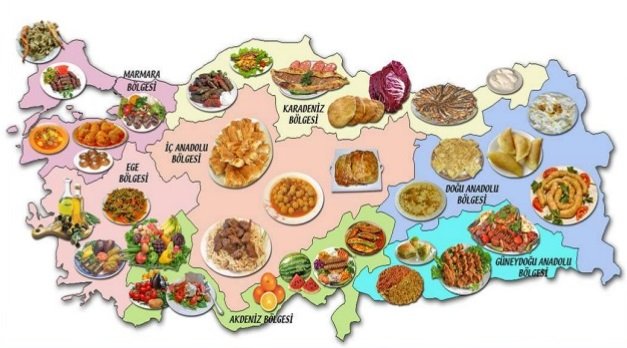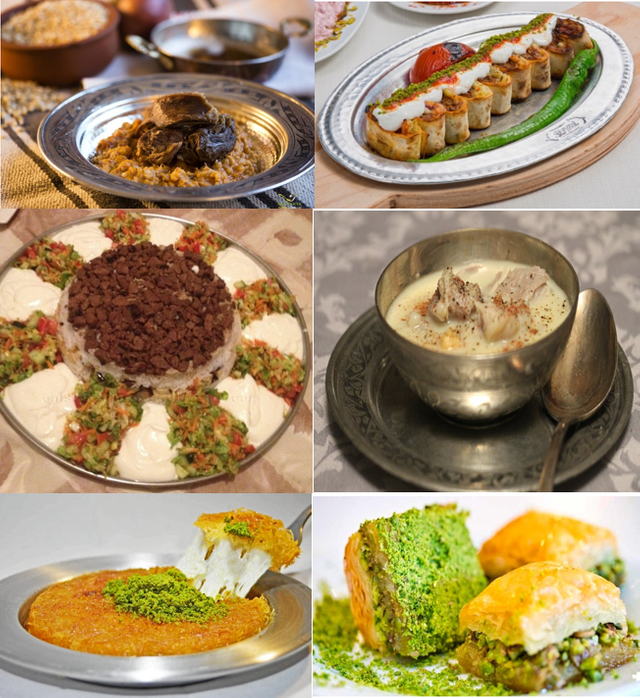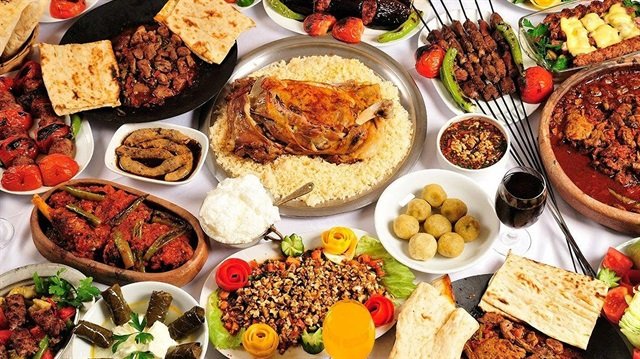The Evolution of Very Delicious Foods: Traditional Turkish Cuisine
Turkish cuisine is one of the most popular one among Chinese, Italian, French and Mexican. Foods differentiate from region to region in Turkey which is the heir of the Ottoman cuisine. While it had a huge impact on Balkan and Middle Eastern cuisines, it was affected from them as well.
The new tastes developed in the palaces of the Seljuk and Ottoman Empires were shaped based on cultural, geographical, ecological, economic and historical processes. These factors had contributed to the enrichment of this culture.
According to the taste map of Turkey, there are 2,205 varieties of local food and beverage. Huge number isn’t it? Among all the other provinces, Gaziantep has the widest variety of food, dessert and drinks with a number of 291.

Have you ever thought about the economic benefits of having a variety of food to a country? In terms of national and regional development, it is a reality that should not be overlooked that the advantages of Turkish cuisine will provide a significant added value in national and regional terms when it is turned into an economic opportunity.
There are 7 regions in Turkey namely Eastern Anatolian, Central Anatolia, Black sea, Mediterranean, Aegean, Marmara and Southeastern Anatolia. Hence, Turkish cuisine varies according to each region. In other words, even there are common foods in each kitchen, specific type of foods is available depending on the region. For instance, fish is quite common in Black sea region, pastry and meat are common in Central Anatolia, olive oil dishes are widespread in Mediterranean and so on...
Let’s look how Turkish cuisine had been developed throughout the years!
When we examine the Turkish culinary culture, we come across a deep historical process that dates back to the 10th and 11th centuries of the Turks from the Central Asian history. The Turkish cuisine, which we define today from the nomadic culinary culture to Anatolia, from the Seljuk heritage to the Byzantine tradition, from the influences of the Iranian-Abbasid culinary tradition to the long Ottoman past, and the shopping with the community kitchens in the past, is a great cultural heritage that has been enriched and matured for centuries.
It is possible to see the following dishes in the Ottoman Palace Culinary Culture tradition which started in the 15th century with the conquest of Istanbul and developed until 20th century:
• kebab prepared with lamb
• stew,
• cutlet,
• roast and meatballs,
• varieties of rice,
• soups cooked with gravy based on grains and legumes,
• sherbet, syrup, jam, prepared with fresh and dried fruits
• pastries, pate,
• kebab, stew and cattle prepared from chicken and fish
• halva, milk puddings, baklava, rose pudding and kadayifs.

Meals are always cooked with salt-free butter. Furthermore, the use of spices is quite common but not as much as it is in medieval Europe or Indian cuisine. The use of dry and fresh fruits in meat and rice dishes as spices, which were more common in early Ottoman Palace Cuisine, decreased in the 19th century culinary tradition.
Lamb meat is preferred rather than beef meat. In addition to chickens, pigeons, partridges, geese, quails, ducks, and turkeys are among the exclusive flavors of the rich dishes in the culinary tradition in 18th century. Contrary to what some researchers state, fish is in the center of Ottoman Palace kitchen and consumed by Sultan and his surroundings.
Tomato and tomato paste were not available in the Ottoman culinary tradition. The tomatoes, which have an important place for Mediterranean cuisine today, have entered the Ottoman cuisine after the second half of the 19th century. The use of tomatoes and tomato paste, which are widely used in Turkish cuisine nowadays, is an innovation that started in the early 20th century.
The Ottoman Palace, which had opened to the west in the 19th century, was also influenced by culinary culture of Europe.
Any round brass or coper tray was used as a table for serving meals and cushion was used as chair. By opening to the West, people were started to use fork, spoon and knife. Moreover, dining rooms started to become widespread during the reign of Sultan Abdulhamid.

European culture began to influence Ottoman cuisine after 1850s. In the Ottoman Palace, another novelty of the 19th century, as we have seen from the menus of the late 19th century, started to offer French dishes together with Turkish dishes. At the same time, European recipes such as roast beef, steak, omelet, pate, garnish, and sauce were published in Ottoman cookbooks. These were added to the Turkish culinary tradition in time and they are often interpreted in a new way.
The last fifty-sixty years have been very influential on the change of the structure of the classical Turkish culinary tradition. The requirements of the industrial society and the emergence and development of the science of nutrition have affected the classical Ottoman-Turkish culinary tradition as well as the rest of the world. For example, in the past, the preferred butter was replaced by margarine and then olive oil and other oils, beef meat was introduced besides lamb meat, and the rich white bread was replaced by the natural village breads.

To be continued by 2nd part…